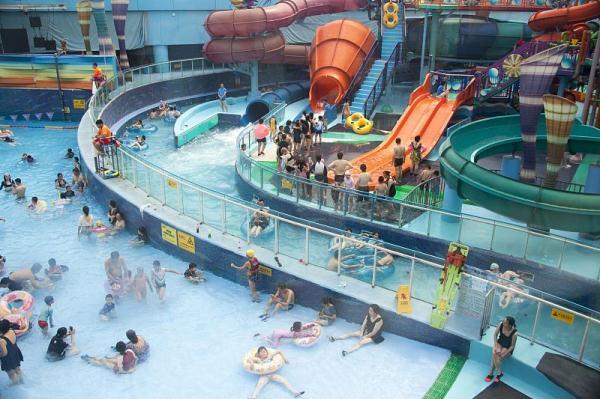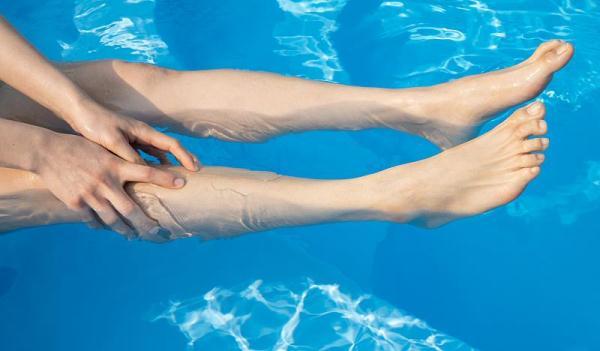In hot summer, swimming is one of the favorite recreational ways for parents and children. The week of July 16th every year is "July 16th National Swimming Fitness Week", and all kinds of swimming activities will be carried out all over the country. So, how to choose a healthy swimming pool? How to protect yourself from swimming in summer? Please keep this guide.

How to find a clean and safe swimming pool?
As a public place,
Consumers will inevitably worry,
Is the water clean or not?
Whether the bacterial content exceeds the standard,
Is the disinfectant put in enough?
How to find a clean and safe swimming pool?
Both summer heat and health?
Keep these details in mind.
01 see documents
According to "Regulations on Hygiene Management in Public Places", "Detailed Rules for the Implementation of Regulations on Hygiene Management in Public Places" and other laws and regulations, the operators of swimming pools need to publicize the hygiene license, annual inspection report and hygiene reputation grade mark in the eye-catching position of swimming pools.
Operators of swimming places must obtain the hygiene license of public places before they can open their business to the outside world, and should show their business license and accept social supervision.
Before entering a public swimming pool, consumers should pay attention to whether the public health permit and the health certificate of employees are publicized in a conspicuous place in the swimming place.
02 Look at the water quality
Before entering the swimming pool, you should observe whether the water quality is good. There are two tips,
Splash the water slightly in the swimming pool. If the foam dissipates by itself within 10 ~ 15 seconds, the water quality is better. If the foam continues to float on the water for a minute or even a few minutes, it proves that the water quality is relatively poor.
Look at the situation that the bottom of the water leans down through the water to see the underwater swimming lane. The farther you look, the clearer the pool is. If the water quality is poor, you can’t see so many lanes clearly
03 Look at the sanitary facilities
See if the swimming place is equipped with dressing rooms, shower rooms, toilets, closed garbage bins and mechanical ventilation facilities that meet the hygiene requirements.
Check whether the water temperature, residual chlorine concentration, pH value and other indicators of the swimming pool on that day are qualified through the electronic bulletin board or text bulletin board of the swimming venue.
Be careful of "swimming sickness" when you have fun.
First, cramps
The supercooled water temperature will stimulate the contraction of blood vessels, so the blood flow will decrease and slow down, which can not meet the muscle activity, thus causing cramps. Lactic acid accumulates in a large amount in muscles, which leads to muscle fatigue and cramps.
Prevention tips:
If you have leg cramps underwater, don’t panic, you should call for help immediately. Straighten the cramped foot after landing and repeatedly pull the sole of the foot to recover as soon as possible.

Second, otitis media
Choking occurs when swimming, and the bacteria in the water will spread to the mucosa of the middle ear cavity along the eustachian tube, causing effusion and obstruction in the middle ear, and then causing inflammation.
Prevention tips:
Protective measures such as swimming cap, goggles and earplugs should be worn as much as possible during swimming to reduce the erosion of hair, eyes and ear canal by pool water.
Third, pinkeye
If the swimming pool is not disinfected properly, a patient with pink eye can easily cause pollution, and everyone in the swimming pool may suffer from epidemic conjunctivitis.
Prevention tips:
After swimming, you should bathe and wash your body in time, and use artificial tears or antibiotics to drop your eyes. Avoid rubbing eyes to prevent damage to conjunctiva and cornea.
Four, diving injury
If you are not careful when diving, it is easy to hit the edge of the pool and cause injuries. The collision between the body and the water surface may also lead to visceral injury in children during development.
Prevention tips:
Keep the correct posture of entering the water, prevent the soles from slipping, and avoid unnecessary injuries caused by excessive strenuous exercise.
Remember the safety knowledge
1 Warm up fully before swimming
It is best to experience the water temperature before entering the water. If the water temperature is too cold or too hot, try not to rush into the water. Before you go into the water, you should do warm-up activities on the shore, warm up for 10 to 15 minutes, and exercise your joints and muscles in all parts. Otherwise, it is easy to cause muscle injury or other accidents if you suddenly engage in more intense activities. Leg-lifting, squatting and standing up can be used.
Pay attention to safety and stay away from wild swimming.
Do not swim without permission, do not swim in waters without safety measures and ambulance personnel, and do not swim in unfamiliar waters. It is necessary to have a physical examination to make sure that you are in good health. Grasp the swimming time, generally no more than 1 hour.
3 Don’t leave the "comfort zone"
Polluted rivers, reservoirs and places with rapids may all lead to drowning accidents. If you encounter bad weather, such as thunderstorms, strong winds or sudden changes in weather, it is not suitable to swim. It is recommended to choose an indoor swimming pool as much as possible every day.
4 replenish water in time after swimming
You will sweat when swimming, but because your body is wet, you often can’t feel the loss of water in your body, resulting in dehydration. Nutritionists suggest drinking 600 ~ 800 ml of water before swimming, and replenishing water in time after swimming.
Swimming has many benefits for the body.
Adhere to exercise and protect health.
There must be unexpected surprises.
Source: CCTV News
Reporting/feedback
关于作者